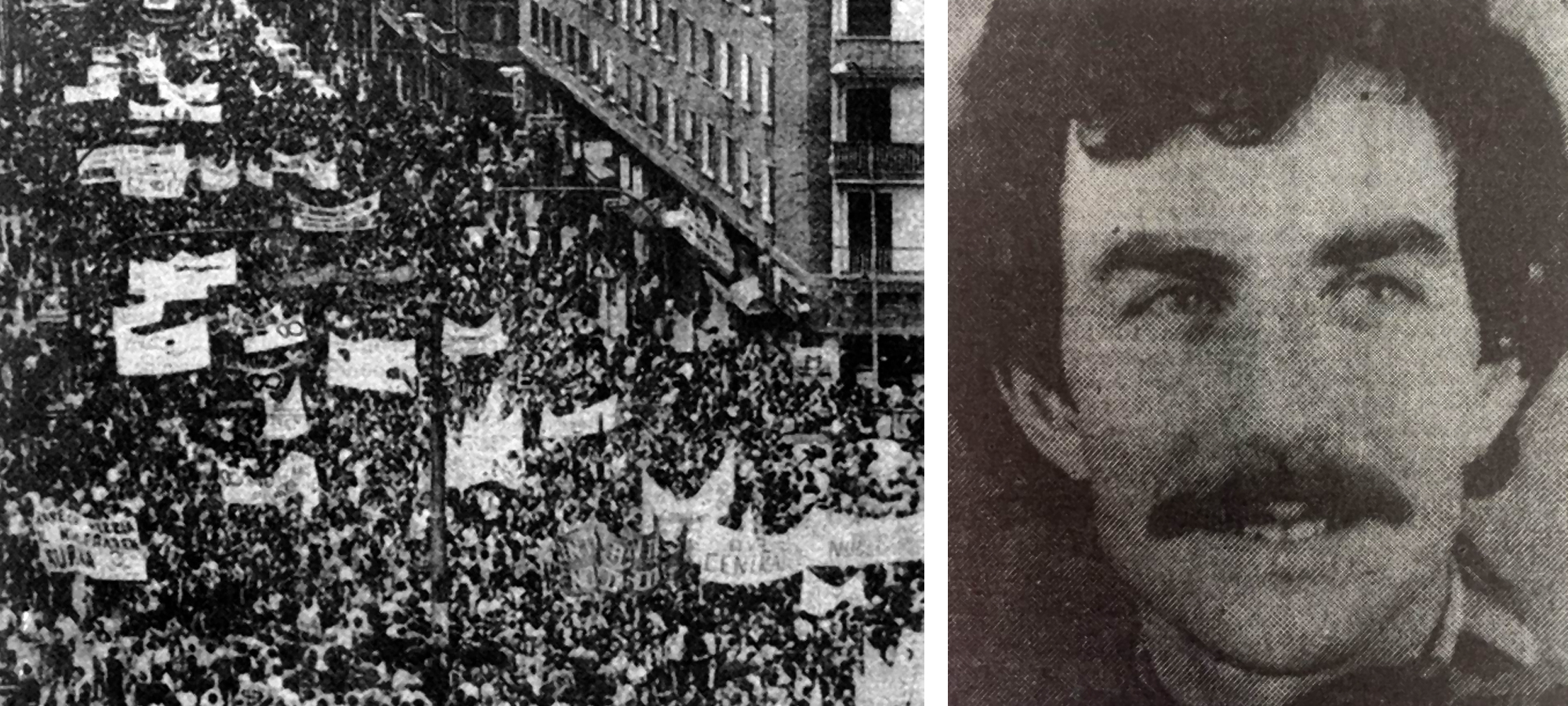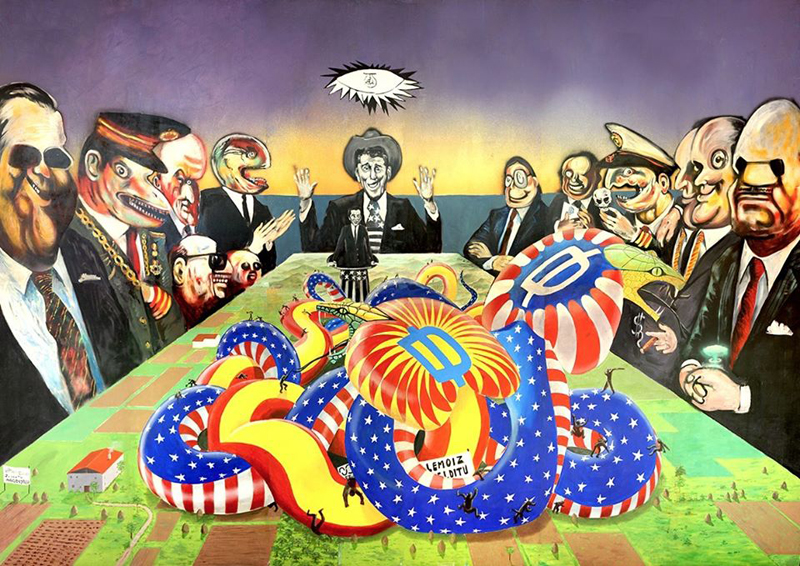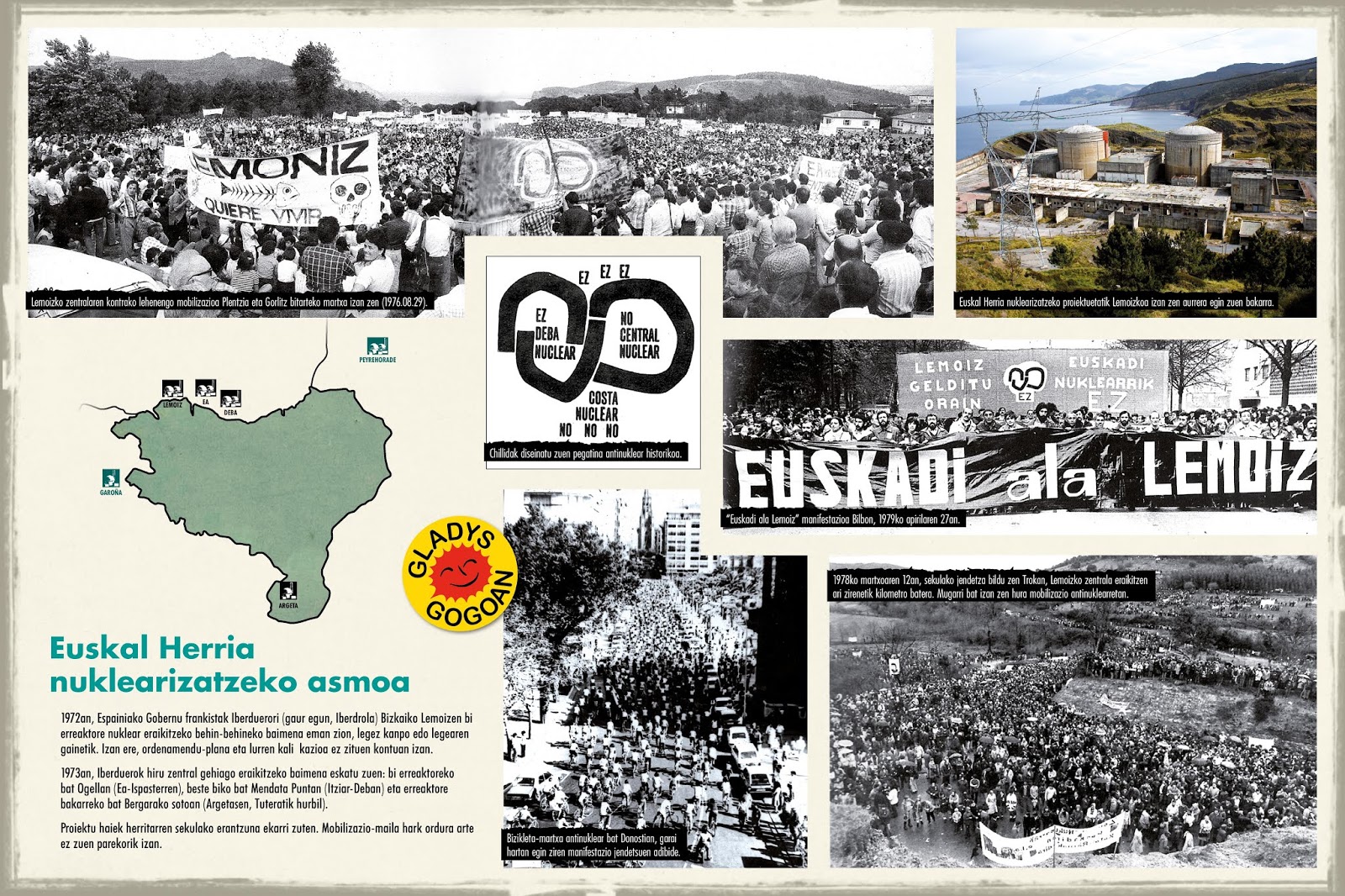"In the past pirates sailed by the sea, today they stay on land"
- Born in Armintza (Lemoiz, Bizkaia) in 1945, Juan Luis Olaran Sustatxa was a fisherman, sailor and cook before being a writer. He has recently retired and written three books, including El contubernio nuclear, de la central Lemoiz, and Izarra baltza, a history of a pirate boat that tells the story of the Izarra boat and which is now headed by Dani Álvarez. He had to live the two things up close.

I cook before a writer, before a fisherman and a sailor.
Yes, in my case it is: At 13 I was starting to work in the village pickle, at 15 a.m., at sea, at fishing, and at 16 a.m. Barcelona, at the merchant. Sailing had already turned 25 years before embarking on Izarra.
How did you get into the Izarra tanker?
I wasn't very compliant then I was on the boat, and a friend invited me into the Auma, which would win well, and I walked in, cook. As soon as I got there, they said, “You don’t know where you got in, it’s a pirate.” So the crew were suspicious, but they were something of the shipowner and the captain.
But he immediately warned of the dark manoeuvres.
I embarked on Las Palmas de Gran Canaria, where he left the oil, and then we took gas from Tenerife to Monrovia (Liberia). It was a normal trip, but from there we received an order to return to the Canary Islands. It didn't seem normal, in principle it was close because we had to go to Nigeria to charge oil. In Gran Canaria, they grounded in the sea without reaching the port and made some arrangements on the boat: they painted the fireplace, blurred the boat and changed their name to Estrella instead of Auma. There it became clear that there was some trap.
So you went to Nigeria.
Yeah, to the port of Bonny, looking for oil, but when we got there, Izarra wasn't in the log book, of course, and the Nigerians rejected the boat. We anchored near the coast, waiting for the entry permit, but the food and fuel were fine-tuned. So we went to Cameroon, we bought food with the little money that the shipowner had given us, and we went back to Nigeria. The Nigerians were suspicious, and one day a patrol officer of the soldiers approached, shooting in the air. They went up to Izarra and searched for a gun on the boat. Then they drove us to the port, arrested.
There began the kidnapping of six months.
In December they gave the coup d'état, in the New Year's Eve of 1983, and we arrived there in March 1984. The new government wanted to expose the corruption of the previous and ... They took Captain José Luis Peciña and sentenced him to death for a crime of oil trafficking. We were kidnapped six months in the boat, and he was in jail for 25 months.
But the foreman was here.
Yes, it was José María López Tapia, owner of the shipping company Letasa. The crisis sector then entered clean business. In fact, all companies disappeared at that time. Currently Spain does not have any maritime trade company other than tourist boats: Weapons, Acciona, Balearia and nothing else.
How many pirates float in the sea?
In the past pirates sailed aboard the boats, today they stay on the ground. They used to be corsaries who were made in exchange for one part, but now those who embark are simple workers. There is also political corruption, the oil that we brought without problems in Las Palmas that Petrolífera Ducar bought, which would later be minister, Arias Cañete, was there.
In another book, The Nuclear Cone, Lemoiz, talks about the nuclear power plant. Who mixed up in that consensus?
The majority of politicians and institutions, both here and in Spain, as well as the Diputación de Bizkaia. There was another project at Deba, but the one at Gipuzkoa rejected it.
In Armintza, and in the town hall of Lemoiz, as a councilor, you are one of those who faced nuclear. Were they all against?
No, the majority of the population was in favour and it was understandable, they saw that there was going to be job opportunities and so it was, most of us had the opportunity to work there. I didn't want to do it, and I continued to sail.
Was the paralysis of the power plant the triumph of the people or the threat of ETA?
A little bit of the two. ETA observed that the majority of society opposed the power plant, sought legitimacy and got in full. It is true that without ETA the power station would not stop, but unfortunately there were deaths and that should not be forgotten. On the other hand, the one who said that we would eat cabbages if the plant was not built did not get it right. It was clearly noted that the plant was not necessary. So, nuclear was very profitable, but only in the short term.
What future awaits you and what would you like for Basorda Street?
The first question is difficult to answer. There have been cultural projects, farm work, thermal power plant… I don’t know what they are going to do. Since it is not possible to return to the previous situation, the simplest thing is to break the wall and let the sea enter, leaving the stupidity as a monument.
“Sei hilabete eman genituen Calabarreko portuan atrakatuta, ontzitik ateratzen uzten ziguten baina ez genekien zer gertatuko zen, gainera, kondenatuko gintuzten zurrumurrua zabaldu zen. Kamerunera ihes egitea pentsatu genuen. Bi ihesaldi saiakera egin genituen barkuko batzuon artean, baina biek huts egin zuten. Han bagenuen lagun bat, Sony izenekoa, gauzak lortzen zizkiguna. Hark motordun txalupa arinak zituen mafioso batengana eraman gintuen, baina ez ginen fidatu. Bigarrenean bitartekari bati dirua eman genion ihes egiten laguntzearen truke. Tipoak dirua hartu zuen, eta adostu genuen hitzordua, geneukan diru apurra hartuta, baina hara heltzean polizia genuen zain... Saldu gintuen. Barkura bueltatu gintuzten, ez gintuzten salatu, baina dirua eta aldean generaman guztia kendu ziguten”.
"Larunbatean Gladys gogoratu eta borrokan jarraitzeko gogoak ditugula ospatzeko bilduko gara", adierazi dute antolatzaileek.
Lore bakar batetan posatzen ez den erlea dugu Jose Allende. 'Zentral nuklearren kokatze politika' barazko tesia egitenz gain, lurralde... [+]
Hori da Lemoizen aldeko eta kontrako guziok PEN berria irakurrita esandakoa... [+]
Euskal Herrian eraiki nahi zituzten lau zentral nuklearren aurkako borroka babesteko, Jose Luis Zumetak, Karlos Zabala Arrastalu-k eta Bixente Ameztoik Lemoiz gelditu horma-irudia sortu zuten 1980an. Duela gutxi, Bilboko Arte Ederren Museoari eman diotela argitaratu zuen... [+]
Egun hauetan gertatukoarekin artikulu bat idazteko baino, enziklopedi oso bat idazteko gaia badago. LEMOIZko zentrala dela eta ETAk Joese Mª Ryan injiniadorea bahitu zuen.
Berehala egin zuten eskabidea: injiniadorearen truke Lemoizko zentrala desegitea eskatzen zuten... [+]




















